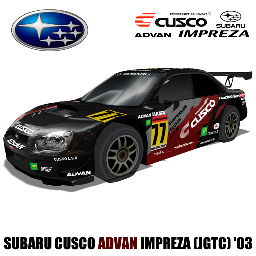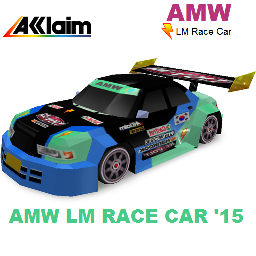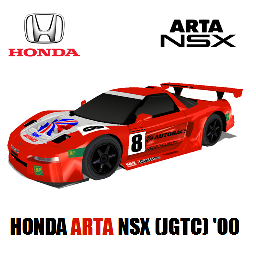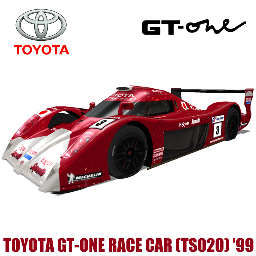- Download count 535
- Pageviews 1003
- Unique foldername r390
- Skin for
- Track Mod for
-
Based on
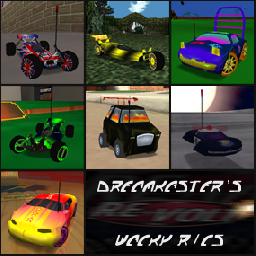 DreamKaster’s Wacky R/Cs
DreamKaster’s Wacky R/Cs - Release date 2015-06-12
- Version from 2016-02-02
- Version
- RVW-ID 18585
- Category Pro Car
- Score
- Unconventional car?
- Construction Original
- Engine
- Transmission
- Top speed mph
- Total weight kg
- Acceleration m/s²
- Construction
- Track difficulty
- Track length m
- Reverse version available?
- Time trial times available?
- Practice mode star available?
- Online multiplayer compatible?
Car Name:Nissan R390 GT1 LM Race Car '97
Year:1997
Constructor:Nissan
Drivetrain(In Game):4Wd
Drivetrain(Realty):MR
Top Speed(Realty):354km/h
History:
After returning to sports car racing in 1995, Nismo (Nissan Motorsport) had some measure of success with their Skyline GT-R LMs which had competed in the GT1 class. However, these cars were quickly outpaced by the influx of new manufacturers who were using loopholes in the GT regulations to build racing cars that bore little resemblance to their GT1 class competitors. This led to such machines as the Mercedes-Benz CLK GTR and Porsche 911 GT1, as well as the development of the McLaren F1 GTR. Nismo's Skyline GT-Rs therefore needed to be replaced with more purpose built machinery.
Turning to Tom Walkinshaw Racing (TWR), Nismo began developing a prototype of the R390 GT1, named to follow in the tradition started in the 1960s with Nissan's R380. The first decision for Nismo and TWR was the choice of engine. The previous Skyline GT-R LMs had used the trusted RB26DETT Inline-6 motor, but the design was old for a racing car, employing an iron block which added weight, and had a high center of gravity. Nismo instead chose to resurrect an engine from the Nissan R89C, a racing car from the Group C era. Its engine, the VRH35Z, was a 3.5L V8 which used an aluminium block, as well as having a lower center of gravity and a better ability to be used as a stressed member over the RB26. Thus the engine was upgraded and designated VRH35L, and would produce approximately 641 hp (478 kW) at 6800 rpm. For road going versions, the engine was detuned to 550 HP.
The car's styling group was led by Ian Callum of Tom Walkinshaw Racing (TWR). The mechanical and aerodynamic design was led both by Tony Southgate, also of Tom Walkinshaw Racing (TWR), and Mr. Yutaka Hagiwara of NISMO. Southgate was the designer of the Jaguar XJR-9 amongst other TWR Sportscars, which had won at Le Mans. Due to this, the R390 GT1 bears a resemblance to the Jaguar XJR-15, which was also developed by TWR and based on the XJR-9 and in fact used a cockpit - including the tub, greenhouse and roof line - very much like that of the XJR15, although for the R390, the rear and front ends, and suspension were completely different, and, due to having being designed to meet GT1 specifications, the R390's chassis was lower and wider, but slightly shorter in length, than the Jaguar, making the R390 larger overall. Development of the car was achieved in a small amount of time, especially due to not having to scratch-build an engine. Nismo and TWR also had to build a production version of the R390 GT1 in order to meet production regulations. A red R390 prototype underwent wind-tunnel testing and aerodynamic improvements in England, however, the final production car was built and tested in Atsugi, Japan. Only two road-legal R390 production cars were built, both blue in color, with one road car ending up in storage at Nissan's Zama, Kanagawa facility. The other was sold through an undisclosed auction to an unknown wealthy recipient and Nissan enthusiast, though said to be registered with British tags reading, 'R390 NIS'.
For 1998 the R390 was modified, most notably in the extension of its rear bodywork to create increased 'luggage space' in order to satisfy the ACO, a new rear wing for racing models (production road cars had no wing), and the addition of a rear diffuser for improved downforce, after all three cars failed scrutineering at the 1997 event and had to be modified in order to be allowed to race. This subsequently led to overheating problems for the gearbox, and ultimately their failure during the race. Thus the 'long tail' version was created, which boasted increased downforce thanks to the extended rear bodywork.
Racing results:
The #23 1997 R390 GT1, the only one to finish at Le Mans '97.
Completed in time for the 1997 24 Hours of Le Mans, the three black and red R390 GT1s were fast in their first competition, with Martin Brundle taking pole position in May's pre-qualifying with a staggering time of 3.43.15. At the race itself, one R390 GT1 (#22) was able to qualify in 4th on the grid and 2nd in its class behind a Porsche 911 GT1, while its partners qualified 12th (#21) and 21st(#23). During the race both cars were able to perform admirably, but soon began to struggle with gearbox problems and, around halfway through the race, two of the three R390s (#21 & #22) finally succumbed to mechanical failure and were withdrawn. The third R390 was able to survive the rest of the race (albeit with two complete gearbox changes along the way) finishing 12th overall and 5th in class, although many laps down from the race winners. For 1998, Nissan returned, this time with four R390 GT1s. The cars were slightly upgraded, with more downforce able to be generated by a longer rear tail, a new rear diffuser, and, on racing versions, a new rear wing placement for less drag. Although Nissan was easily beaten in qualifying by Porsche, and Mercedes-Benz, Nissan was able to achieve considerable success in the race. As an achievement of its own, all four cars were able to finish the race. With this, Nissan was able to finish 3rd, 5th, 6th, and 10th overall, being beaten only by the Porsche 911 GT1.
Following the 1998 24 Hours of Le Mans, rules for the GT classes were changed, mostly to end the amount of manufacturers attempting to use loopholes. This meant Nissan was forced to abandon the R390 as it was no longer legal. Nissan instead turned to the LMP classes, developing the R391 prototype for 1999. This program would also be short lived and Nissan would end up leaving Le Mans.
A total of eight R390 GT1 race chassis were built over the two years of the program.
PATCH:
-Fixed Parameters

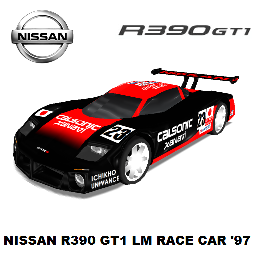
 Not enough votes
Not enough votes
